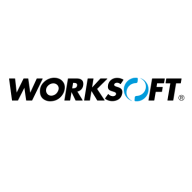

Find out what your peers are saying about Atlassian, Microsoft, Nutanix and others in Application Lifecycle Management (ALM) Suites.
It acts as an enabler for effective test and program management.
Technical support has been excellent.
Quality is always high yet not perfect.
OpenText ALM Quality Center is definitely scalable.
From a stability standpoint, OpenText ALM Quality Center has been pretty good.
Improvements are needed so that the system can continue running without creating a new run.
I see a stable tool that remains relevant in the market.
HPLM has one of the best UIs compared to other test management tools, allowing for efficient navigation between test pieces, test folders, test suites, and test execution.
It would be cheaper to use a cloud model with a pay-per-use licensing model.
The integration with internal applications and CollabNet is made possible through exposed APIs, allowing necessary integrations.
It creates constant visibility into the test process, showing the status, bugs, and automated test results.
We can create a requirement for stability metrics with the test cases to ensure all requirements are covered.


Worksoft Certify is the industry's first codeless automated testing system, created for non-technical people to test end-to-end business processes at an enterprise scale.
It was designed to test complicated processes spanning numerous apps and integrating into contemporary DevOps tool chains. Worksoft Certify manages dynamic input, process flows, and frequent variances in business processes with ease.
Worksoft Certify automates the testing of your exact business processes across all of your enterprise applications. This solution makes it simple for customers and suppliers to package a process with all of its related dependencies, sub-processes, record sets, record filters, layouts, and variables.
Worksoft Certify automates tests as effortlessly and quickly as the underlying applications permit, allowing you to evaluate business processes in record time with flawless dependability and consistency. Worksoft Certify speeds up test automation by utilizing a patented Object Action Framework, which effectively models the application under test as a set of pages containing GUI objects and test steps that perform actions on those objects.
Worksoft Certify Features
Worksoft Certify has many valuable key features. Some of the most useful ones include:
Worksoft Certify Benefits
There are many benefits to implementing Worksoft Certify. Some of the biggest advantages the solution offers include:
Reviews from Real Users
Jens N., Enterprise Architect SAP Solutions at a computer software company, writes, “As compared to other tools for test automation, what is very good in this tool is the ability to implement logic into the scripts without coding and learning a complex script language. It is comparable to defining formulas in Excel. It is pretty easy to learn how to make your scripts more intelligent and more flexible as per the situation.”
Aditya C., Sr Test Automation Architect at a tech services company, notes, “The most valuable features of Worksoft Certify are the way we can maintain the processes and sub-processes inside. We can immediately identify and replicate multiple objects in the application without having a major issue with it.”
We monitor all Application Lifecycle Management (ALM) Suites reviews to prevent fraudulent reviews and keep review quality high. We do not post reviews by company employees or direct competitors. We validate each review for authenticity via cross-reference with LinkedIn, and personal follow-up with the reviewer when necessary.